 Harlem hath no fury like a righteous man scorned.  
This Japanese poster for the 1990s period crime drama A Rage in Harlem happened to catch our eye, partly because the art by Joe Batchelor is great, but also because we knew the American promo featured not this painting but a rather banal group photo of the cast. We don't know why Japan got the better promo, but we can speculate. By this time global audiences were acclimated to photographic promo art, but in Japan the cast—Forest Whitaker, Robin Givens, and several established actors of the period—were unknown to local filmgoers, so the distributors marketed the movie as an art film, a sort of exotic trip to 1950s Harlem. The text on the poster's reverse seems to confirm that: 1956, Harlem. Jazz clubs, dancehall dresses, and people in suits, with a nightlife unfolding in a Harlem-style destination.
Chester Himes' novel For Love of Imabelle provided the source material, and it features everything the poster promises. The story deals with a naive and religious young Harlem undertaker played by Whitaker who's taken in by scam artists, tries to retrieve his money, but runs into an array of complications, some of them comical, most of them lethal. The movie follows the book pretty closely, which means it's bound to have good moments, but the direction by Bill Duke is a bit ponderous in the early stages, the script's many interjections of humor lack the zest of Himes' writing, the soundtrack is often a mismatch of mood, and the entire production suffers from budgetary constraints. It wasn't shot in New York City, but rather Cincinnati. While architecturally that made sense because Cincinnati has scores of brownstone houses in the style of old Harlem, there's really no substitute for the Big Apple.
On the plus side, the cast is interesting. Whitaker would later become a respected Hollywood figure, though here he's a little green, still feeling his way as an actor. Danny Glover, Bajda Djola, and Gregory Hines are entertaining in supporting roles. Givens fits the part of a femme fatale like a glove—which is to say, she's slinky as hell and startlingly beautiful. And turning back to the setting, while, as we said, Cincinnati is no Harlem, the many brownstone apartment houses did create a workable backdrop, and Duke uses the city in every advantageous manner he can manage. These are enough attractions, we think, to push the movie onto the plus side of the ledger. After its 1991 U.S. run A Rage in Harlem reached Japan in 1992. The rear of the poster gives a premiere date of May 2.
                    
 The climate there was always changed from what the rest of America knew. 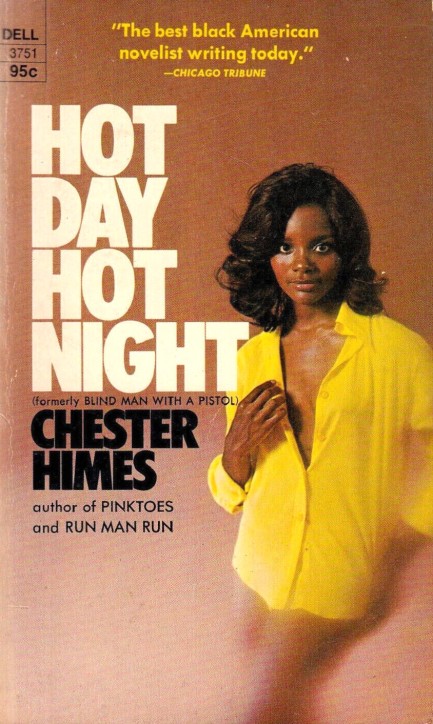
Legendary author Chester Himes originally published Hot Day Hot Night in 1969 as Blind Man with a Pistol, with this Dell photocover edition featuring a beautiful model coming in 1970. Those two years are about as far forward as we're willing to go when it comes to fiction for our website (we often read newer books, but don't write about them). Elmore Leonard and Stanley Ellin likewise have pushed the upper boundary of our vintage perimeter, so Himes, of course, has received an exception too.
Hot Day Hot Night features a typically digressive Himes narrative that derives from the murder of a charlatan and a missing suitcase of cash. The dead scam artist, who called himself Doctor Mubuta, had convinced a ninety-something preacher named Mister Sam that an arcane formula could restore youth and virility. It sounds a bit crazy that anyone would believe that, but Himes puts it succinctly: It wasn't any harder to believe in rejuvenation than to believe equality was coming. It's also easier to believe when you have no idea what the ingredients in the concoction are, as revealed in this amusing exchange:
“What's that milky stuff floating around in it?”
“That's albumin, same stuff as is the base for semen.”
“What's semen?”
Mubuta doesn't answer that—smartly, we think. Other elements of the miracle mixture include baboon balls, bits of rabbit, eagle, and shellfish, some rooster feathers, and a “concupiscent eye.” Of course, this is total baloney, though we never find out what's really in the stew. Ingredients readily available around Harlem exclude eagles. Anyway, when the deal goes awry and Mubuta ends up stabbed to death, Himes' franchise detective duo Grave Digger Jones and Coffin Ed Johnson are drawn into the investigation in what is their final official appearance here in the eighth novel in Himes' Harlem Detective cycle (they also featured in 1993's posthumously published Plan B).
We've described Himes as a sort of literary walk on the wild side, and he's as uncompromising as ever all these entries into his Harlem series. It will be interesting to see how his work is regarded as the years pass. Himes is a mirror image of writers like Chandler and Spillane, working along identical literary lines, casting nearly every character in his books as criminals or victims. But the expectations on Himes were different, because—indisputably—rules change according to who's playing the game, and what color they are. We recommend this book, and everything by Himes.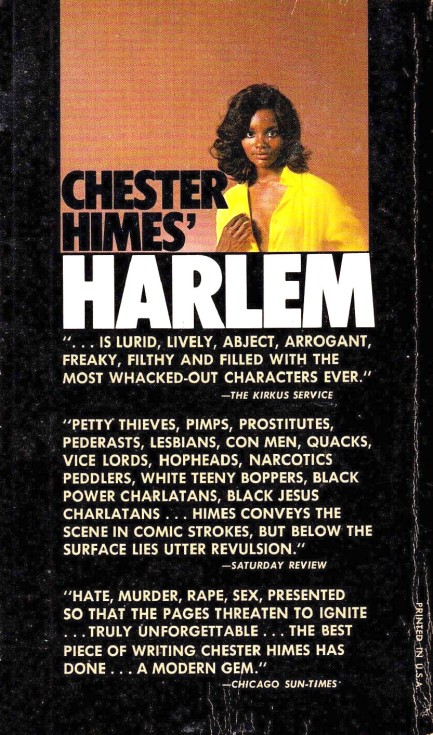
 Shaft hit America and changed the game. 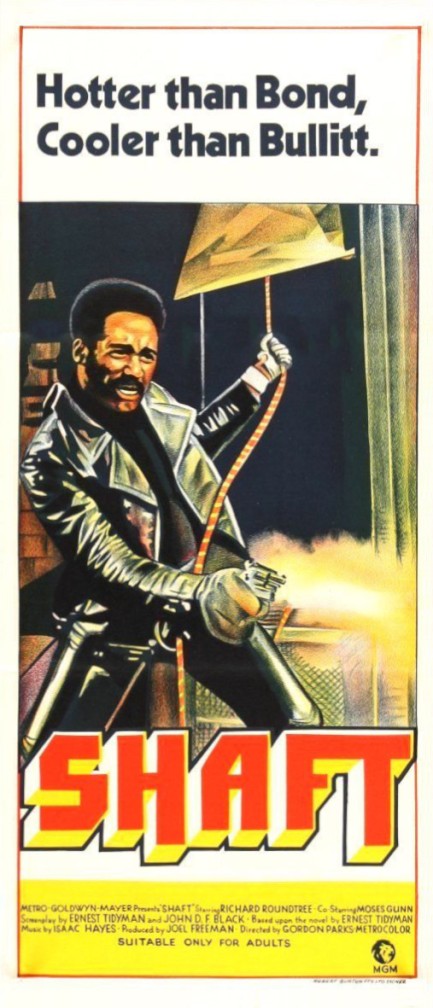
We've discussed quite a few blaxploitation movies, but have neglected the 1971 thriller Shaft. What can you say about the granddaddy of them all, the movie that helped change Hollywood thinking about what viewpoints would sell? Many of the black oriented movies that came afterward were cash grabs, and for that reason most of them weren't good. No such problems exist with Shaft. It's fast, furious, and fun. Our viewing was a reminder that in addition to being a detective movie and a movie that centers black experiences, it's also a neo film noir in both execution and mood. Directed by acclaimed photographer and photo-journalist Gordon Parks, Shaft is gorgeous work, made mostly in actual locations around New York City, and sprinkled with symbology and visual metaphor right from the opening credits.
The character of Shaft is important in film history. Because the theme song is so widely heard most people know Shaft is a bad mother shut-your-mouth, but as the song also says, he's complicated. He lives in Greenwich Village in a bachelor pad decorated with modern art and filled with books. He's kind to children and helps people in need. He has feelings for his girlfriend but will not be tied down and is obliging toward other women who desire him. And he's a friend to any people who treat him with respect. This extends to his local bartender, who's gay and dispenses a familiar pat to Shaft's ass that we can assume isn't the first or last. A bad mother shut-your-mouth? For sure, but he's so much more. And likewise, Shaft is more than a detective movie. It's a cinematic achievement that entertains visually, intellectually, and viscerally. It's a must watch. It was first seen by the public at a special premiere in Detroit, Michigan today in 1971. 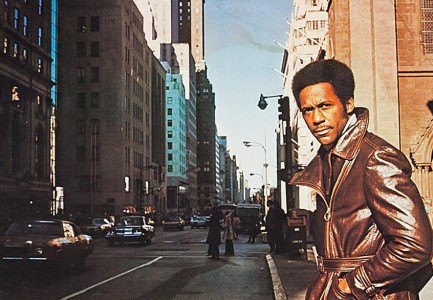 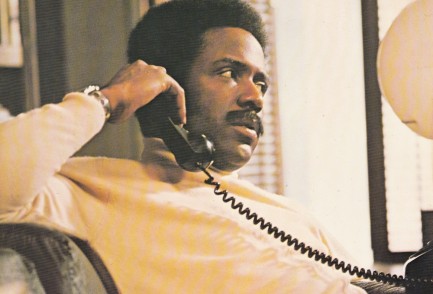 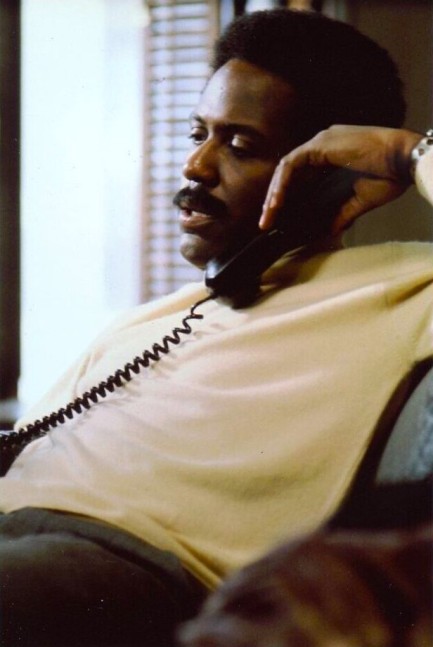 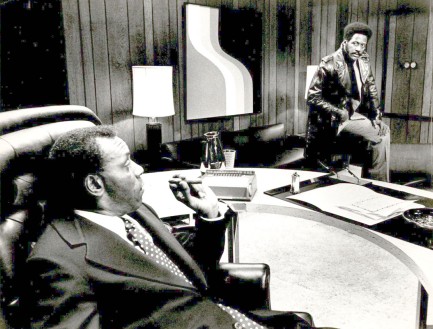 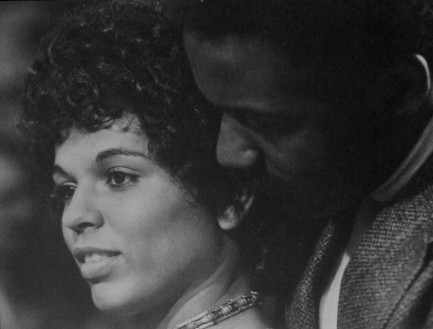  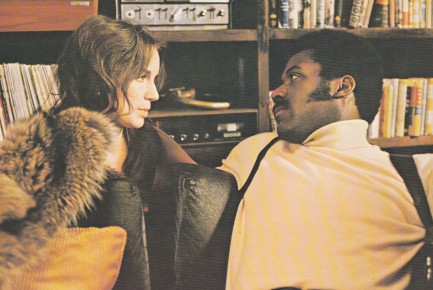 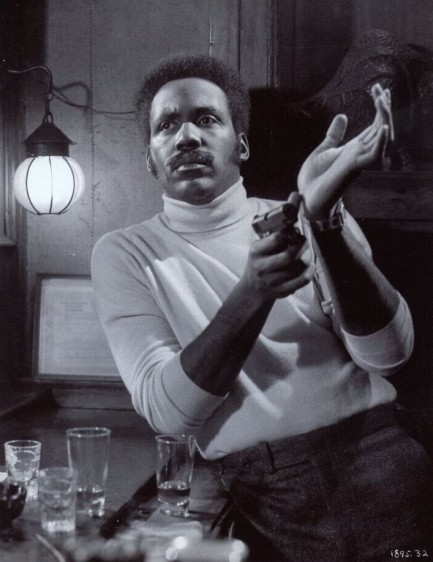 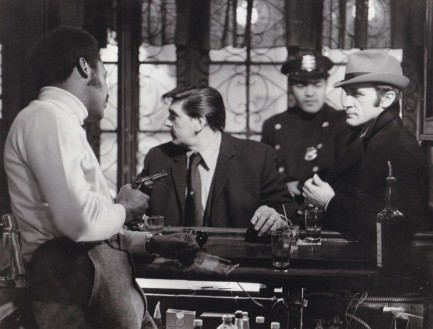 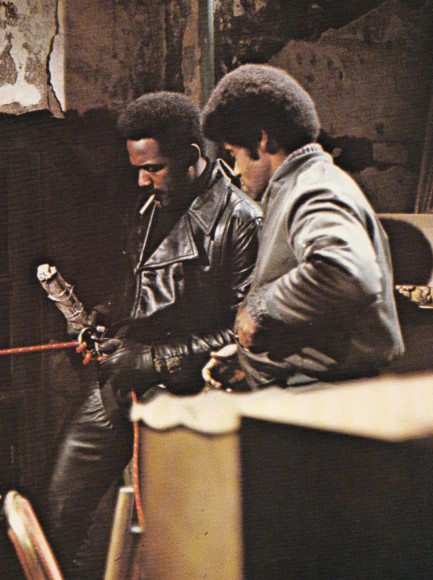 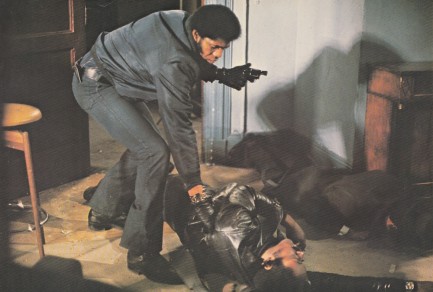 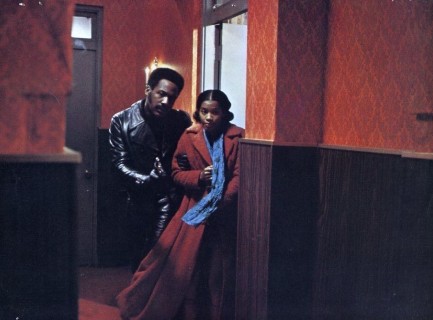 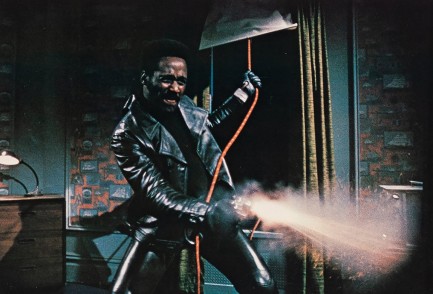 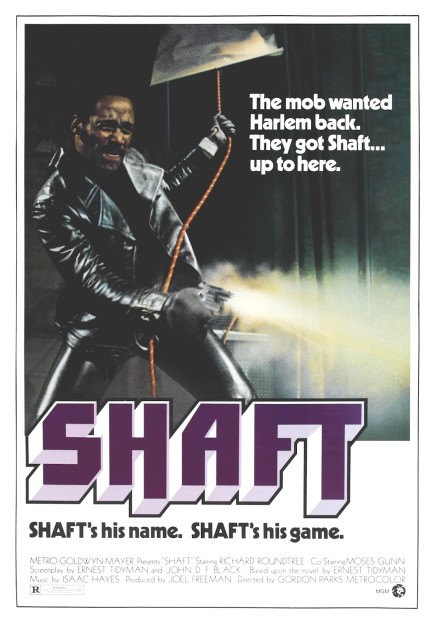
 The best defense is a good offense. 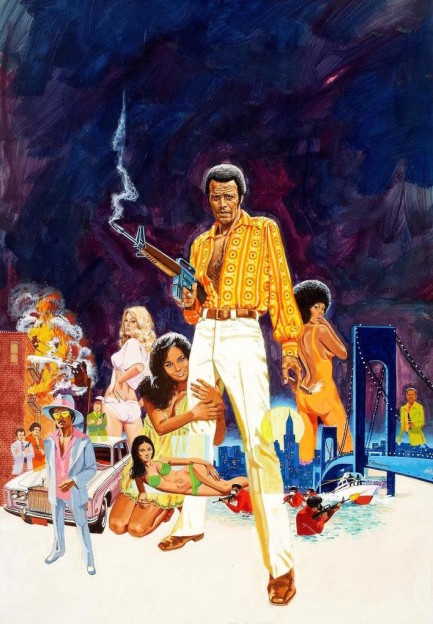
Above: the original promo art for Hell Up in Harlem, a blaxploitation classic starring former NFL defensive back Fred Williamson, along with Gloria Hendry and others. This masterpiece was painted by Robert Tannenbaum, a promo art icon whose website you can check out here. You can read about the movie here. Hell Up in Harlem opened in New York City today in 1973.
 Anthony Quinn and Yaphet Kotto give their all and then some in hard luck crime thriller. 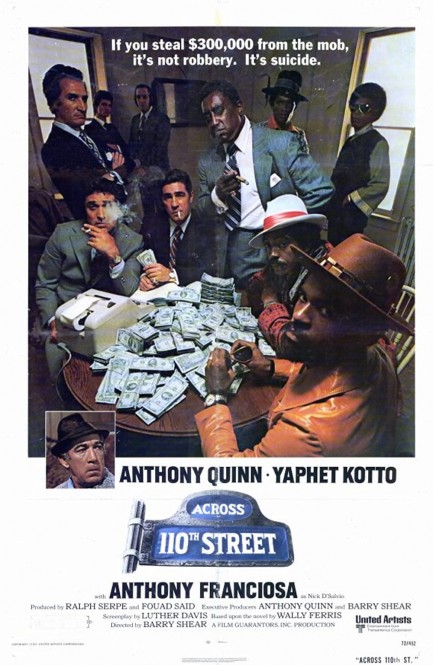
Across 110th Street premiered today in 1972, which makes it one of the early arrivals in the blaxploitation wave that was sweeping American b-cinema. With its ample budget and its well established headliner in Anthony Quinn, you could make the case that it isn't fully part of the genre, but we think it fits, even if it's atypical. Outlier or not, you'll see several faces in this that would soon become well known in blaxploitation, and you'll also see Burt Young, later of Rocky and Chinatown. Plotwise, the movie centers on odd couple cops—old school racist Quinn and college educated reformist Yaphet Kotto—thrown together à la In the Heat of the Night to solve an NYC murder/robbery. As familiar as this oil vs. water dynamic may be, the movie still comes together in exciting fashion thanks to the way it tracks the robbers' storylines. They're a trio of amateurs who ripped off the Mafia for $300,000 and now are being hunted by both crooks and cops. Quinn and Kotto must find these thieves before the Mafia turns Harlem into a war zone. When the film was released it was criticized for its violence and bitter racial subtext, but upsetting the herd is one of the things it tries to achieve. And while it may not appeal to people's better angels, it's quite interesting, with the grit of Wally Ferris's otherwise radically altered source novel left intact, and the central metaphor embodied in the title—that of which lines will be crossed and what the consequences will be—deftly observed. Across 110th Street is rough stuff, but well worth a watch. 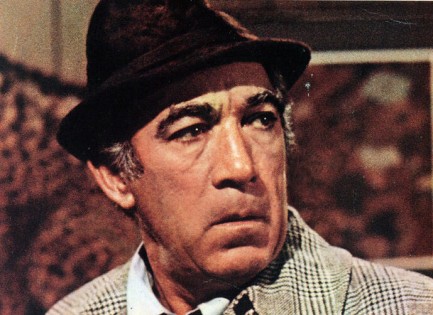 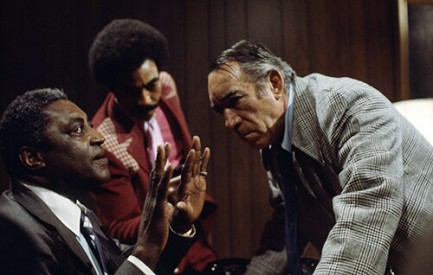 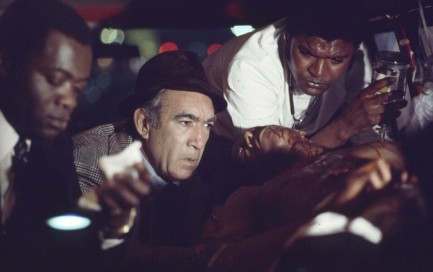 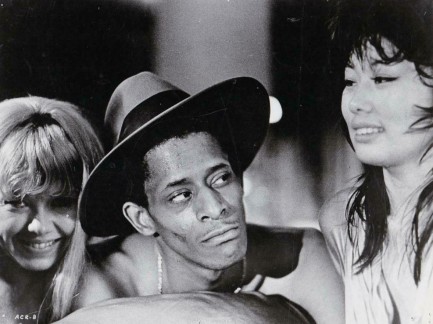 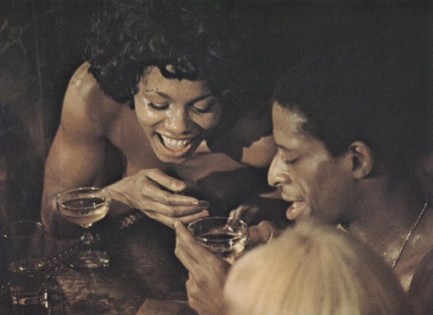 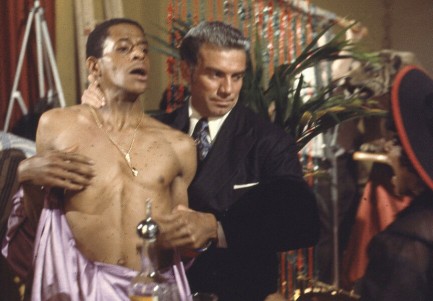 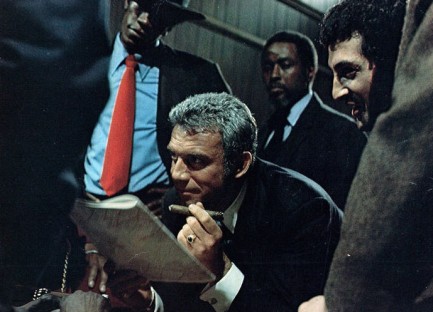 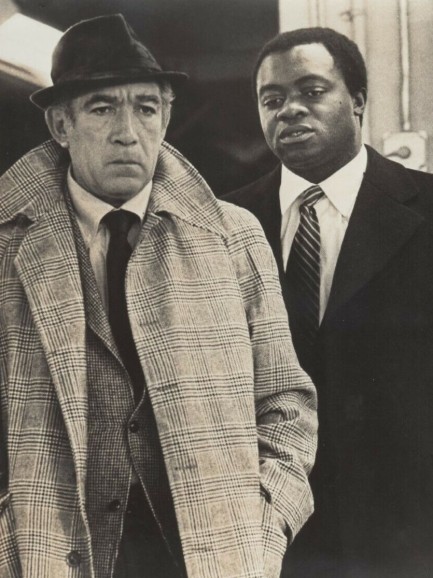 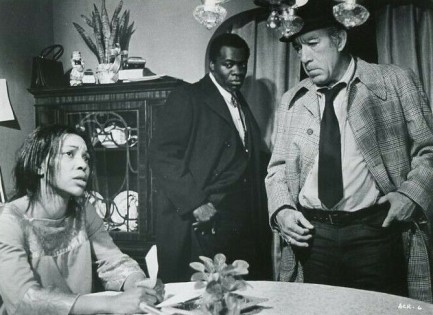 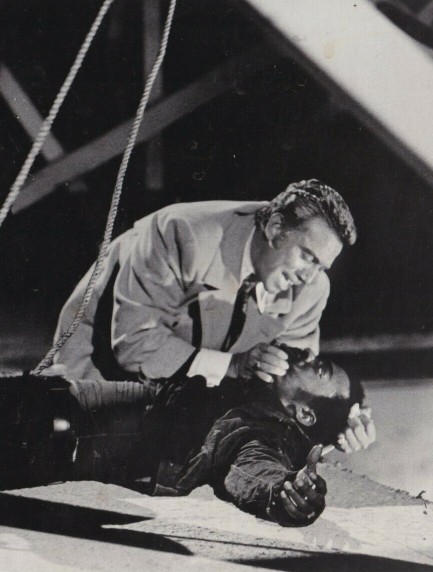 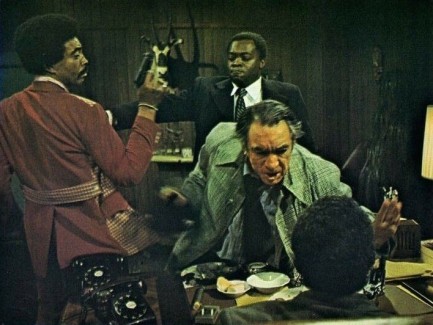 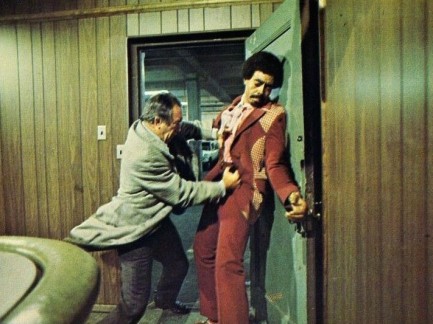   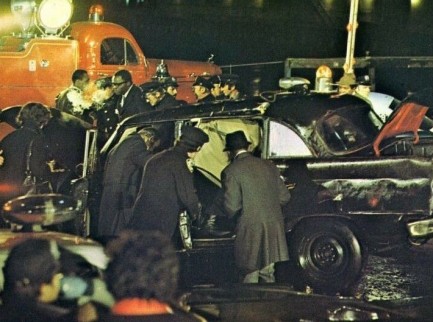 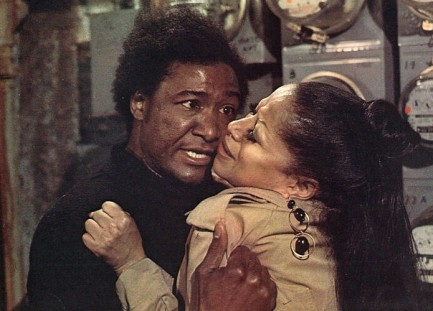  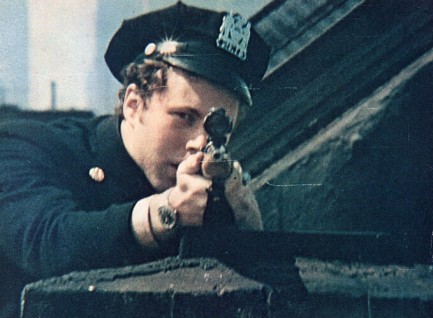 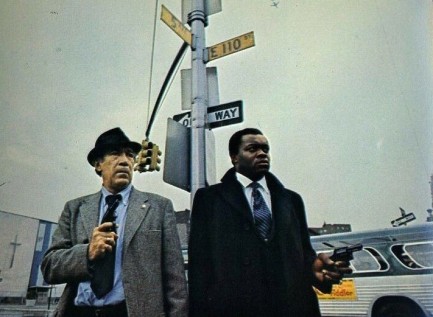 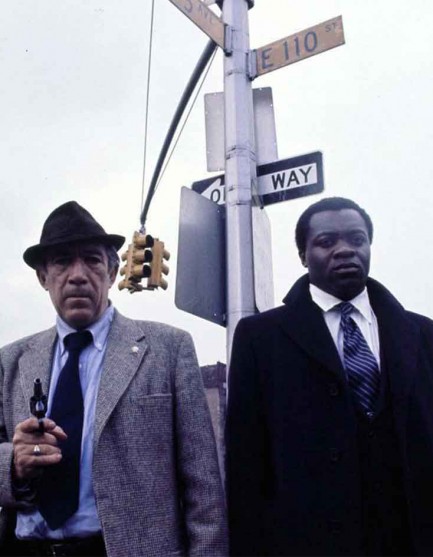 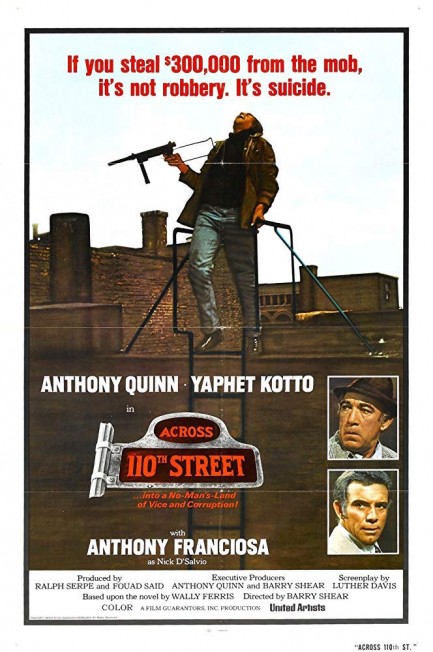
 Who's the hardest dick in New York City? You know who. 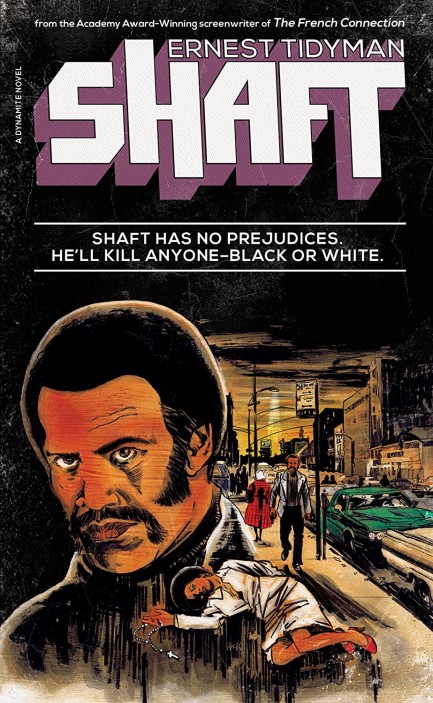
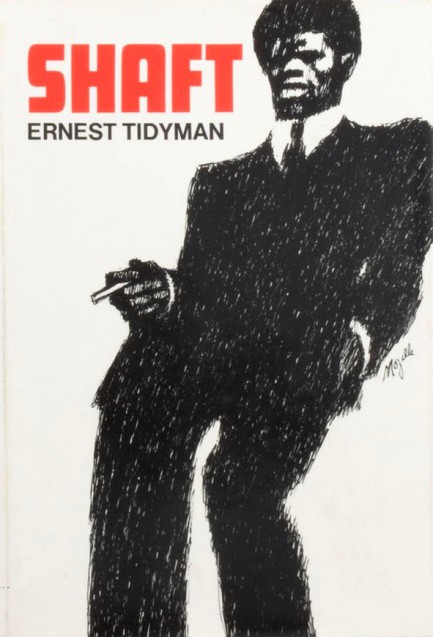 We don't know about you, but we had no idea Shaft was a novel that predated the movie until we saw the above cover art. Written by Ernest Tidyman, this originally appeared in 1970 and was quickly snapped up by Hollywood. That edition was a hardback with a black and white cover by Mozelle Thompson and is rare. The edition you see at top was published in 2016 by Dynamite Entertainment and is widely available. We don't know about you, but we had no idea Shaft was a novel that predated the movie until we saw the above cover art. Written by Ernest Tidyman, this originally appeared in 1970 and was quickly snapped up by Hollywood. That edition was a hardback with a black and white cover by Mozelle Thompson and is rare. The edition you see at top was published in 2016 by Dynamite Entertainment and is widely available.
Plotwise, Shaft is hired to find a drug kingpin's kidnapped daughter with the help of Black Panther style revolutionaries. Tidyman's take on New York City and the social climate of the time is entertaining and the violence is swift and brutal. Because filmdom's Shaft was inclusive in his views, even to the extent of a jokingly flirtatious friendship with a gay bartender, we were surprised by the book's homophobia. Tidyman saw Shaft as ultra tough and therefore anti-gay, but the filmmakers saw right through such silliness and decided to turn that aspect of the book on its head. Another change is the treatment of the drug kingpin's daughter. In the movie she's merely kidnapped, but in the novel her captivity takes the form of narcotic and sexual slavery. In terms of white authors inhabiting the personas of black Big Apple detectives, the trailblazing Ed Lacy did it better with 1958's Room To Swing, but Tidyman manages well enough, we think, even if his prose sometimes meanders. Though we read Shaft only because it was the wellspring of an excellent blaxploitation flick, turns out the book is worth a gander on its own merits. Tidyman also wrote like five sequels. We know nothing about those, but maybe we'll have a look.
 I have a vision... It's getting clearer... It's you... buying the updated and revised edition of my book. 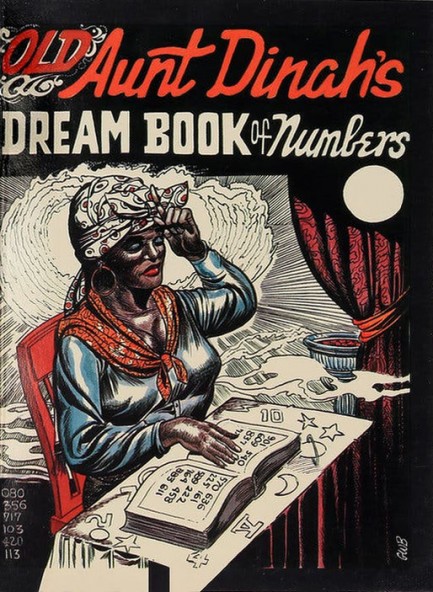
Above you see the cover of Old Aunt Dinah's Dream Book of Numbers. We've already talked about Gene Bilbrew's covers for 1970s dream books. We're revisiting the subject today to give you this additional look at his work, but also to take a historical angle on his specifically African American art. Playing daily numbers was an African American invention, part of an underground economy that flourished in many large cities, but reached its apotheosis in Harlem.
It's impossible to know when playing the numbers began—certainly long before the turn of the twentieth century—but the practice took off during the 1920s when a black West Indian man named Casper Holstein began using bank-to-bank transaction data published in New York City papers as the selection mechanism for his daily numbers. Previously, numbers had been chosen in various unreliable ways, but Holstein's innovation placed the selection of numbers in public view, removed any suggestion of corruption, and as a result Harlem's daily lottery thrived.
Which is exactly why the city of New York decided to take it over in 1980, a coup it managed in part by promising to use a portion of the numbers revenue toward public education costs. And of course, proving once again that politicians are the lowest creatures that ever crawled from beneath slime covered logs in miasmic swamps, the city then cut its contributions to the education budget so there was ultimately no net gain for schools, while profits were neatly excised from the black community.
Old Aunt Dinah's Dream Book of Numbers is the third dream book illustrated by Bilbrew we've shared. We're fascinated by the exotic, made-up personae on the covers. The idea of gypsies, Arabs, creoles, Asians, or very old people somehow tapping into mystical power thrived in pulp fiction, early movies, cartoons, and, as you see, even on the covers of dream books. Old Aunt Dinah is our favorite dream book invention, but the characters Madame Zodia and Princess Shaharr—the latter of whom we'll show you later—are close runners up.
For those who don't know what books like these are about exactly, we explained that in our typically roundabout way in previous write-ups, here and here. Shorter version: Dream until your dreams come true. We already have a couple more to share, and we'll keep an eye out for others. And of course we'll continue to be on the lookout for paperback art by Gene Bilbrew. You can see what he's about by clicking this link. 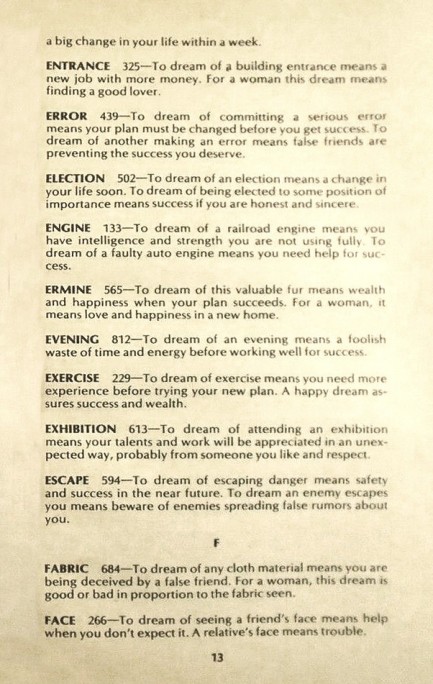
 A love blooms in Harlem. 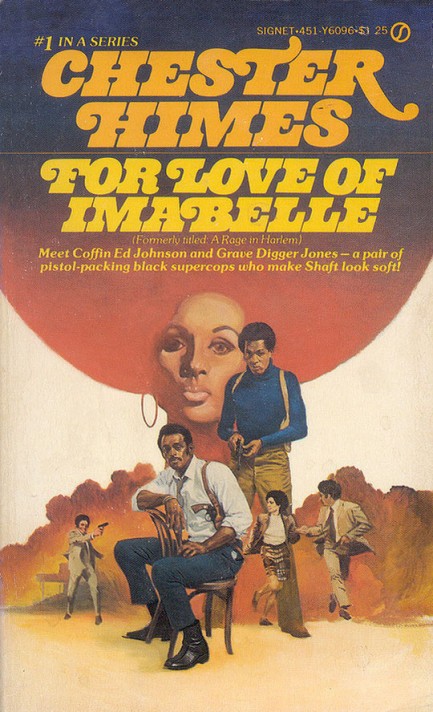
Chester Himes' wild Harlem crime novel For Love of Imabelle, which we talked about last year, was originally published in 1965. This Signet edition is from 1974. We rarely like ’70s covers, but this is great, with its expansive afro used as a background for the text. The art is by the same person who illustrated this Himes cover, but both, unfortunately, are uncredited.
 Himes' Harlemites take the prize. 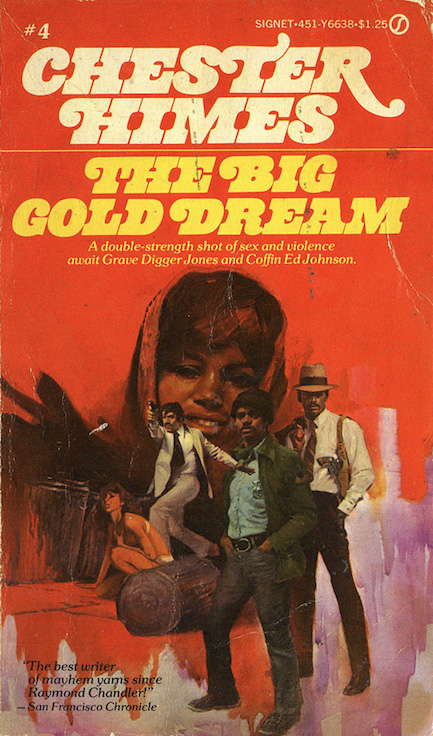
Above is an unusual orange cover by an uncredited artist for Chester Himes' crime yarn The Big Gold Dream. We're Himes fans, but for us this wasn't as enjoyable as For Love of Imabelle or The Real Cool Killers, nor as well written, in our opinion, but the author's flair is undiminished in a tale about a lottery winner whose $36,000 cash prize is stolen. The most interesting character here is Dummy, a man permanently deaf from a beating and mute from having his tongue cut out, but whose disrespectful nickname belies his tenacity. And of course franchise detectives Coffin Ed Johnson and Gravedigger Jones also star. There are caricatures many readers will find offensive, but that just makes Himes like most writers of the period. No matter what, with him you can count on a portrayal of Harlem that's quirky and insightful, and that's probably reason enough to read the book. It originally appeared in 1959, and this Signet edition dates from 1975.
 From behind the microscope to in front of the camera. 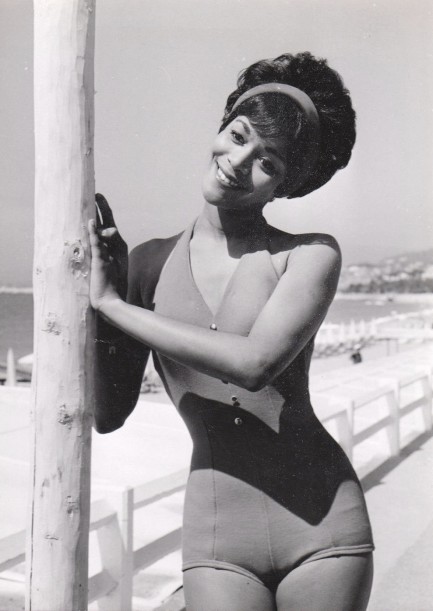
You don't know U.S. actress Emily Yancy but she's been around for a long time. She started performing on television in 1963 and is still going strong as of 2018. Of her few cinematic efforts two were notable—the blaxploitation classics Cotton Comes to Harlem and Blacula. Her small screen appearances include Starsky & Hutch, The Mod Squad, and MacGyver.
The above photo is from 1961, and it was made when she was eighteen years old and competing in the Miss American Beauty Pageant, not be confused with the Miss America Pageant. Interesting story, she was a biology major and was working at NYU Medical Center operating an electron microscope when her coworkers persuaded her to give parading up and down a stage in a swimsuit a shot. She won Miss American Beauty, which gave her a chance to compete again in France.
She was sent to Cannes and finished second in the Miss Cannes Film Festival competition. After that Hollywood called and those boring old electrons were forgotten. Television, film, nightclub performing, modeling and a lot of travel followed. There's a lesson in this story, and maybe not one that should be taught to little girls—Forget science! Give us a little leg!—but you don't need a microscope to see that Yancy takes a great picture, and her career longevity suggests she made a good choice.

|
 |

The headlines that mattered yesteryear.
2003—Hope Dies
Film legend Bob Hope dies of pneumonia two months after celebrating his 100th birthday. 1945—Churchill Given the Sack
In spite of admiring Winston Churchill as a great wartime leader, Britons elect
Clement Attlee the nation's new prime minister in a sweeping victory for the Labour Party over the Conservatives. 1952—Evita Peron Dies
Eva Duarte de Peron, aka Evita, wife of the president of the Argentine Republic, dies from cancer at age 33. Evita had brought the working classes into a position of political power never witnessed before, but was hated by the nation's powerful military class. She is lain to rest in Milan, Italy in a secret grave under a nun's name, but is eventually returned to Argentina for reburial beside her husband in 1974. 1943—Mussolini Calls It Quits
Italian dictator Benito Mussolini steps down as head of the armed forces and the government. It soon becomes clear that Il Duce did not relinquish power voluntarily, but was forced to resign after former Fascist colleagues turned against him. He is later installed by Germany as leader of the Italian Social Republic in the north of the country, but is killed by partisans in 1945.
|

|
|

It's easy. We have an uploader that makes it a snap. Use it to submit your art, text, header, and subhead. Your post can be funny, serious, or anything in between, as long as it's vintage pulp. You'll get a byline and experience the fleeting pride of free authorship. We'll edit your post for typos, but the rest is up to you. Click here to give us your best shot.

|
|






































































 We don't know about you, but we had no idea Shaft was a novel that predated the movie until we saw the above cover art. Written by Ernest Tidyman, this originally appeared in 1970 and was quickly snapped up by Hollywood. That edition was a hardback with a black and white cover by Mozelle Thompson and is rare. The edition you see at top was published in 2016 by Dynamite Entertainment and is widely available.
We don't know about you, but we had no idea Shaft was a novel that predated the movie until we saw the above cover art. Written by Ernest Tidyman, this originally appeared in 1970 and was quickly snapped up by Hollywood. That edition was a hardback with a black and white cover by Mozelle Thompson and is rare. The edition you see at top was published in 2016 by Dynamite Entertainment and is widely available.













































































